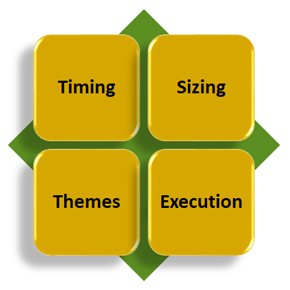
Trading Performance Metrics
Scroll down to continue learning.
What are Trading Performance Metrics?
Trading Performance Metrics are a set of statistics that provide insights into trading, and how a trader generates his/her P/L.
They are objective data points that bring meaningful insights to stakeholders.


Gains/Losses being generated over a period of time. Commonly shared as a before tax number.
Compares P/L generated to the risk used. The most basic metric regarding return on risk.
Reflects positive P/L days against total trading days in period observed. When the ratio is above 50% positive days exceed negative days.
Highlights the magnitude of the up days relative to the down days. When the ratio is above 100% then the average positive day is greater than negative.
Calculates where the current P/L is relative to the high-water mark. Never positive and always want the Draw-Down to be close to zero.
Calculates number of days under the high-water mark.
Calculates where the current P/L is relative to the low water mark. Opposite of Drawdown.




